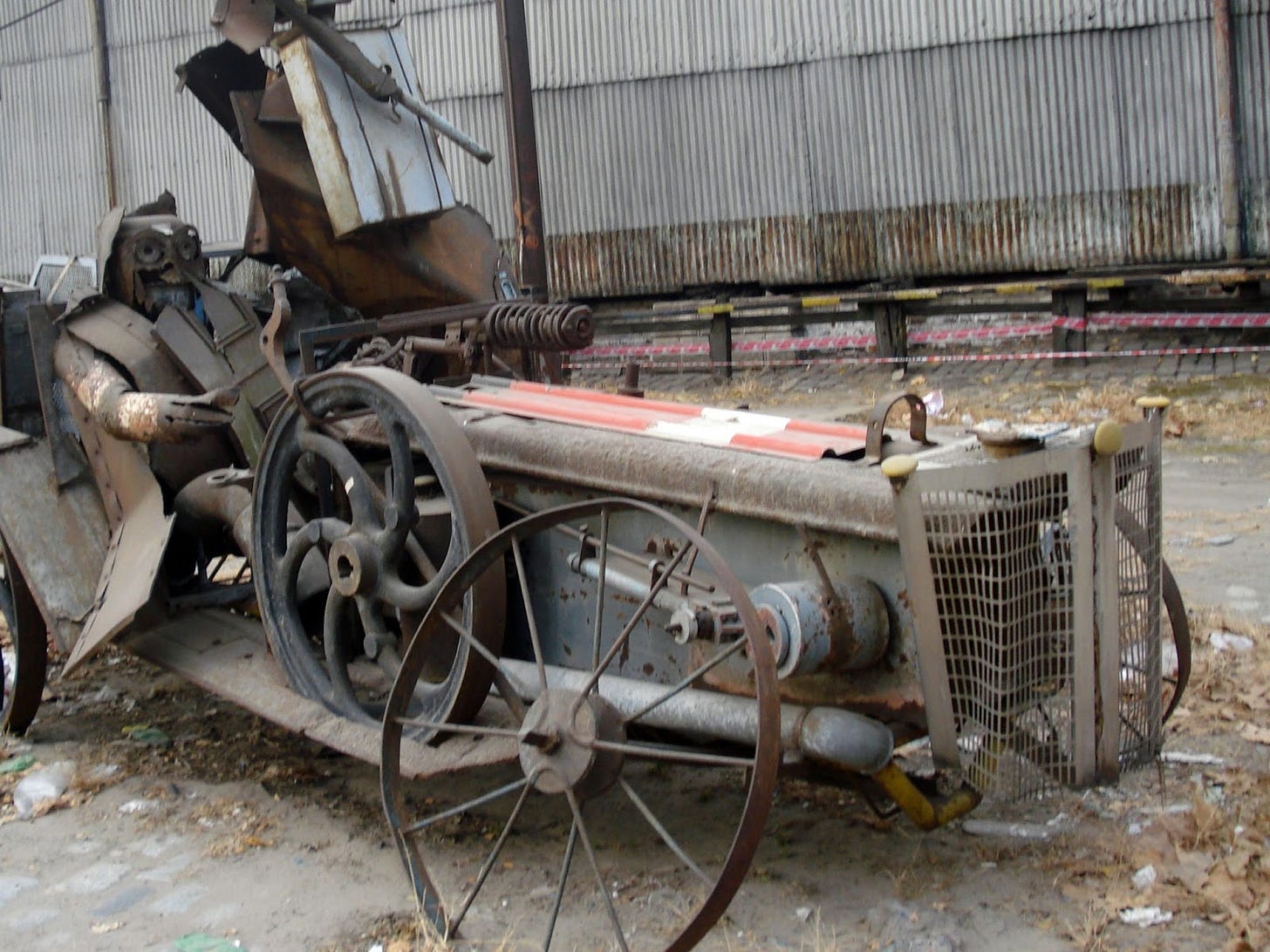Circa May 2002, I just got my first job as an all-rounder in a very small, family-owned tech company located on the other side of the city of Buenos Aires—a 1.5 hours commute from home in Quilmes—and I am taking the train early to get to San Martin where this company has its offices. As the train slowly rolls out from Retiro station and lazily heads West, I can see some sculptures next to the tracks. A giraffe, huge insects, and what seems to be a giant humanoid. Every day, and for the following two years—the time I lasted in the job—I would appreciate these intriguing sculptures time and again.
In time, I would eventually learn that these pieces of art were made by the late Carlos Regazzoni, an insanely underrated artist who, for years, created metallic creatures out of old, rusty railway scrap material.
I recently came across an interview with Regazzoni from 20141, where the journalist asked him:
J: Do you first sketch something?
CR: No, when it comes to sculpture, I play with space and I feel it before it’s done. Then, all that's left is just to build it.
J: From where do you start?
CR: From the most difficult part.
And when the journalist inquires if he could teach about art, Mr. Regazzoni adds:
“Art can’t be taught. But it can be learned.”
Twenty years ago, and as my inner engineer was blooming, I started to realize how much of the engineering design work is, in a way, a form of sculpting.
Creating technical artifacts from scratch is very connected to sculpture. There might be techniques, methods, recipes, standards, but at the end of the day, there is a lot of feeling in it. Go find a book where you can find “good architectures”. Just as you can’t find any books on how to write a good song, or make an eye-catching giant steampunk ant. That can’t be taught. But it can be learned. A decent systems engineer must feel the architecture before it’s done. Then, all that’s left is just to build it. Such feeling, as abstract as it may sound—and we engineers are not fond of abstractness—is the result of trying things on and on, and a lot of “playing with space”.
Regazzoni’s art heritage includes a piece called “The improbable vehicle” (see below), which I find especially attractive. It looks beautifully precarious and absolutely incapable of going far without falling apart. Regazzoni purposely felt it that way, and—thankfully—built it. It is what it was meant to be.
Many systems I’ve seen around are more like accidental “improbable vehicles”, blissfully unaware that they are walking art installations.

